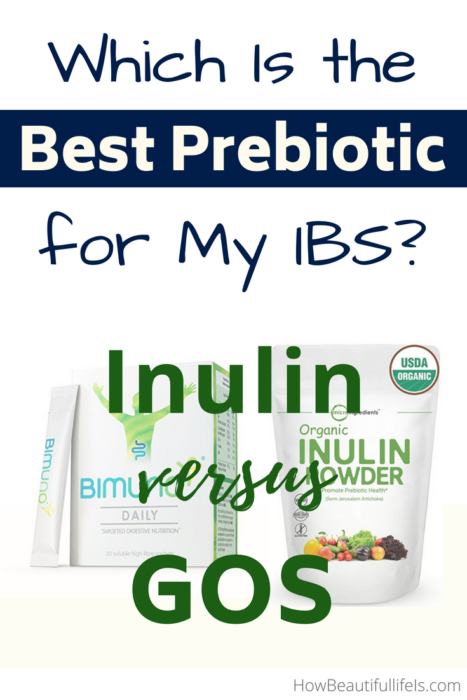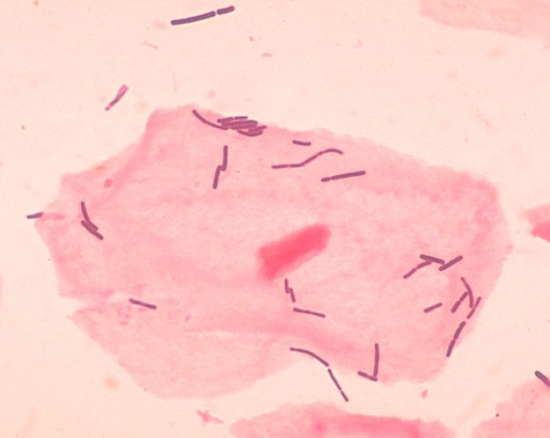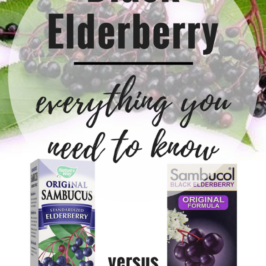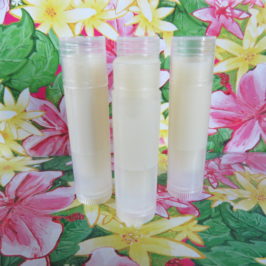This post may contain affiliate links. If you make a purchase through a link, I may receive a small commission, at no cost to you. These commissions help keep this website up and running, and I thank you for your support. Read my full disclosure here.

I have Irritable Bowel Syndrome (IBS) and have previously written posts about how important prebiotics and probiotics have been in supporting my IBS. The most frustrating thing about IBS is that there is no simple treatment, and everyone experiences different symptoms caused by different triggers. But prebiotics and probiotics have helped ease not just mine, but a lot of IBS sufferers’ symptoms.
If you have never heard of prebiotics and probiotics, then jump onto my post Prebiotics and Probiotics: What Are They and How Do They Affect My Health? to learn more. In a nutshell, prebiotics are soluble fibres which pass through the stomach and into the intestines, where beneficial bacteria (also known as probiotics) feed on them. Common prebiotics include: inulin, Fructo-oligosaccharides (FOS), Galacto-oligosaccharides (GOS), lactulose and lafinose. In this article, I’m going to compare the two common prebiotics that are currently on the market. That includes inulin and Galacto-oligosaccharides (GOS).

What is Inulin?
Inulin is a type of soluble fibre found in many plants. It is a “fructan”, meaning that it is made up of chains of fructose molecules that are linked together in a way that can’t be digested by your small intestine – which is actually a good thing because instead, it travels you the lower gut, where it is a food source for the beneficial bacteria that live there. Inulin is commonly sold in the form of chicory root powder, so is suitable for vegetarians and vegans.
Benefits of Inulin
Inulin is naturally high in fibre, which contributes to normal bowel function and promotes digestive wellbeing. Having the right balance of bacteria is essential for keeping your gut healthy and protecting you from disease. Inulin can help stimulate the growth of these beneficial bacteria. This can relieve constipation by softening the stool and also relieve diarrhoea by creating a firmer stool. Some studies have also shown that it can improve mineral absorption and may help treat inflammatory bowel disease.
I’ve included a video below which provides a short summary of inulin and its benefits.
Side Effects of Inulin
Although it can help some people with IBS symptoms such as constipation and diarrhoea, in others it can also cause it, alongside flatulence (gas), bloating and stomach pain.
How to Take Inulin
The powder is tasteless and very fine, so it easily dissolves in water or can be added to food. The recommended inulin intake is 5 to 10g per day; however, be cautious when you begin taking prebiotic supplements because for those with particularly sensitive guts, it can actually cause discomfort, stomach upset, flatulence, and even diarrhoea. If you are planning on introducing it into your diet, start with small doses. You should be aware that if you do have an issue with taking inulin, it is commonly used as a food supplement. So, if you experience these symptoms, always check food labels.
What is Bimuno?
The brand Bimuno sell B-GOS, which they refer to as a second generation GOS. It is produced from lactose, a component of cow’s milk. That means it is not vegan friendly, but it is suitable for vegetarians. The company also states that it is gluten free and non GMO.
Bimuno offers two products; Bimuno Daily, which includes 30 sachets of powder and Bimuno Travelaid, which contains 30 pastilles.

Benefits of Bimuno
Both the company and users of the product claim that Bimuno helps constipation by keeping you regular, reduces diarrhoea and bloating, and aide’s recovery from traveller’s diarrhoea.
Here is a video produced by Bimuno that provides a short summary on how Bimuno works.
Side Effects of Bimuno
Similar to inulin, the possible side effects of taking Bimuno is abdominal bloating and discomfort.
How to Take Bimuno
Similar to inulin, Bimuno powder sachets can be dissolved in water or sprinkled on food. The pastilles are just eaten like a sweet.
Inulin Versus Bimuno
I ordered a box of Bimuno Daily, which contained 30 sachets. The recommended dosage is one sachet per day, either dissolved in water or sprinkled on food. The ingredients on the box stated that it contained:
- Galacto-oligosaccharides (B-GOS)
- Lactose (from milk)
- Glucose syrup
- Thickener (Gum Arabic)
- Acidity regulator (Trisodium Citrate)
I must admit that I wasn’t particularly impressed by the ingredients list as it seemed to contain a lot of additional additives such as glucose syrup, thickener and acidity regulator. Each sachet contains 3.65g, of which 1g of sugar. In comparison, the inulin I take is 100% chicory root powder and each 5g serving contains 0.4g of sugar.
Both products were fine powders that dissolved easily. The Bimuno was more of a cream colour, whilst the inulin was white and slightly finer. Both products do not need to be refrigerated.
I did not like Bimuno’s excessive packaging. The box contained 30 individually foil-wrapped servings. I would prefer they stop the unnecessary individual sachets and just sell it in a recyclable container that you can measure out servings from, like the inulin. In addition, at RRP $9.99 per box for 30 days it works out as costing $0.33 per day. On the other hand, you can get a 1kg bag of inulin for around $21.95, which at 5g per serving will last you 200 days and cost $0.10 per day. So Bimuno is the more expensive option. However, this didn’t deter me, because I felt that if it made me feel significantly better than the inulin, then it would be worth the extra expense.


What I Experienced Taking Inulin
(I just wanted to advise that this is not a sponsored post. I paid for this product myself and was not approached by the company to review this product).
Although the recommended inulin intake is 5 to 10g per day, due to the reaction some people can get when they first take inulin, I started with just under half a teaspoon each evening, diluted into a cold glass of water. The chicory powder is very fine and easily dissolves. Sometimes I sprinkled it into my dinner instead, as it’s quite tasteless. After a week at this dos,e I honestly did not notice any side effects, so I increased it to a small teaspoon, again with no ill effects. This is the dose that I now regularly maintain.
Tip
- Don’t use warm water, otherwise, it takes on a bit of a funky taste. When you make some up, drink it straight away, otherwise, it can taste a bit funky if left standing for a while.
Thankfully, I did not seem to experience any adverse effects. So far, I have found it very beneficial in reducing my diarrhoea and ensuring I stay regular when it switches to constipation. Although it helps me in the bathroom, it doesn’t seem to help the painful, gassy, bloating that I sometimes get. Some research and individuals claim that prebiotics can help to reduce the sensations of hunger, but I’ve experienced no change in my appetite when taking inulin.
What I Experienced Taking Bimuno
(I just wanted to add a reminder that this is not a sponsored post. I paid for this product myself and was not approached by the company to review this product).
Before starting Bimuno, I stopped taking my inulin for the week prior. The Bimuno website states that the timing of this rebalancing of the gut bacteria averages around 7 days, for some people, this might be less or more. I planned to take the full 30 days of sachets that came in the box and felt that this was a reasonable period to trial it.
I took a full sachet of the Bimuno in the evening. I preferred to dilute it in a glass of water to drink with my evening meal; however, you can add it to your meal instead. The Bimuno was a fine, slightly yellow powder. It dissolved quite quickly, and it had a mild, inoffensive taste, but it was more apparent than the inulin chicory powder. During this time, I continued my usual diet and also took my daily probiotic.
Over the first two weeks, my stomach made loads of gurgling noises in the morning. My diarrhoea seemed out of control. On reflection, it probably would have been better to start with smaller servings, but this is not suggested on the Bimuno website. I struggled on; the angry rumbling would last for a few hours in the morning. It rumbled on my walk to work and continued as I sat at my desk (embarrassing!).
A couple of weeks into it, the stomach rumbling started to settle down, but it never completely disappeared. Sadly, the diarrhoea continued unabated, all the way to the end of the 30 days. Within a day of ending the Bimuno and starting back on the inulin, my diarrhoea immediately settled down, so I can definitely say that this did not help me with this problem.
Some research and individuals claim that prebiotics can help to reduce the sensations of hunger, but I’ve experienced no change in my appetite with either Bimuno or inulin. I also did not experience any improvement in the painful gas that forms in my upper stomach, which was disappointing, as I have not been able to find anything that 100% eases this symptom.
The one positive experience I had whilst taking Bimuno was a general improvement in my anxiety. I was surprised by this, as I was particularly stressed when taking it, thanks to a restructure at work. I do experience anxiety, but I felt calmer and less anxious than I usually do. I spent some time doing some research on this and found that this can be a positive side effect for some. For example, a study that gave participants either FOS (similar to the prebiotic inulin) assessed them as having less stress hormone, cortisol and more positive emotional processing when compared with participants who had received no Bimuno. There was no effect on the participants who had taken the FOS. I think it is important to note that this research was funded by the company that makes Bimuno, and this may have influenced the outcome.
Conclusion
In conclusion, for those of you who cannot tolerate inulin, I would recommend trying Bimuno. Personally, I would like to be able to take both prebiotics – the inulin to help me in the bathroom, and the Bimuno to help ease my anxiety. But unfortunately, due to my budget, I can’t afford both at this time. I have continued to take inulin daily because of the support it offers me with my bowel movements and because it is so affordable.
What is Your Experience?
Have you tried either of these prebiotics? Let me know your thoughts below in the comments.
References
¹Kristin Schmidt, Philip J. Cowen, Catherine J. Harmer, George Tzortzis, Steven Errington, and Philip W. J. Burnet. Prebiotic intake reduces the waking cortisol response and alters emotional bias in healthy volunteers. Psychopharmacology (Berl). 2015; 232(10): 1793–1801. Published online 2014 Dec 3. doi: 10.1007/s00213-014-3810-0







Chris
Inulin after a time, gave me great sleep provided I took it 3 times a day as stated on the packet. Long term though it started to have a really powerful diuretic effect which disrupted both my sleep and my work. Lowering the dose to once a day just meant my insomnia returned.
Bimuno on the other hand really did eventually stop the 4am cortisol spike which was disrupting my sleep and which peer reviewed research shows it can sometimes do. I experimented by stopping bimuno for a month and the spike returned after a couple of weeks. I’m now happily back on bimuno which does not have a diuretic effect and only needs to be taken once a day. Such a simple solution compared to all the time I’ve wasted with doctor’s referrals to “sleep hygiene” and “stress management” sessions, none of which worked.
You need to experiment with long term use of both Inulin and Bimuno (not at the same time) to find what works best for you.
Violet
Thank you for your useful comparison of the two products. I have been taking Bimuno for about eight months and have also found an improvement in anxiety levels and sleep, also relief from constipation, which is what I took it for. At 78, I was beginning to notice memory problems and occasional confusion, perhaps it was simply a side-effect of anxiety, but I now feel more like my confident self. I do, however, find it expensive and was considering trying inulin instead, but on the whole I feel the Bimuno is easy to use and worth every penny- I just have to decide what to do without to stay healthy and happy!
Colleen
Hi Violet, if you decide to try the inulin, I would be interested to hear how you compare the two.
Ed Pickup
I have just started taking Bimuno as a part of Banatrol banana flakes. I am experiencing immediate relief from the diarrhea issues. I believe that my diarrhea is caused by medications (as I take 11 different medications all of which list diarrhea as a side effect). The Banatrol is quite expensive ($37.00 for a 28 dose supply) but it includes the Bimuno. The relief from stomach discomfort and less uncertainty in the bowels is quite noticeable, and I am very thankful to get some relief.
Knowledge Sourcing
The market for inulin is witnessing significant growth over the course of the next five years which may be attributable to the fact that food manufacturing companies are increasingly using inulin primarily to boost the prebiotic contents, replace fats, also to replace the use of sugar and additionally to enhance the texture of food.
Mette from Denmark
I’ve been taking Bimumo daily for a while now, I have a healthy stomach but sometimes I do experience constipation and I really like how Bimini helps my stomach to be regular.
I’ve noticed that my skin has improved very much since starting on it.
While I was reading your article I remembered that some of your symptoms are what my mom experienced until she found out she had fructose allergy.
After she stopped eating certain fruits ( especially apples ) her stomach is so much better. I think fructose allergy should be mentioned more, a lot of people don’t know about it and suffer from stomach issues for years.
Sorry for the ramble, but thank you for you article. I will continue using Binumo 🙂
Colleen
Hi Mette from Denmark,
I really appreciate you sharing your thoughts. I haven’t considered a possible fructose allergy, so now I’m off to do some further reading on it. Thanks for the suggestion.
Melinda
I just started Banatrolplus product and had immediate relief with noted bulking of my diarrhea. I have the stomach noise and some middle of the night gas, but I am lucking and have no other pain with my IBS / diarrhea. I just have watery diarrhea. Immediate relief was amazing – I am starting my second day of only two packs a day. I will continue to see what happens. I am glad I read your information so that I have another hope if this doesn’t work.
Colleen
Thanks Melinda,
It looks like Banatrol Plus uses Bimuno probiotic and banana flakes but is marketed more for use in the medical setting rather than mainstream use like Bimuno. It is gluten free but contains milk, so wouldn’t be suitable for vegans. I would be keen to try it but I don’t seem to be able to get any samples of it in the UK. Not sure if I would just get the same outcome I did on the Bimuno.
Rog
Hi Colleen, I have been taking Bimuno each day for about 3 weeks. I feel that it has helped me sleep better but I also have had the same reactions as you regarding stomach ache and diarrhoea with no sign of it settling down yet. I may have to try half doses but as you rightly say with it being in a small sachet its not easy to measure. I will have to try and persevere a bit longer as I have bought 3 boxes lol. Perhaps I will go back to inulin after that.
All the best,
Rog
Colleen
Thanks for sharing Rog. I was interested to hear you had the same response as I did.
I am keen to hear if it settles down as you make your way through your 3(!) boxes, as I stopped using it once I finished the box.
Ter Dolan
I take bimuno daily but have started on inulin again go to see GP Monday she wall advise me
Colleen
Thanks for your comments Ter Dolan. What has your experience been? Do you have a preference?
Tony
I’ve taken both and find Inulin to be far more effective. I take 5g twice a day in water.